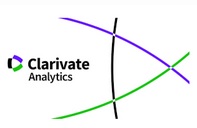Development of a support needs assessment scale for children and adolescents with intellectual disabilities
Supporting Agencies
- Ministry of Economy
Abstract
The paper presented is focused on the development of a scale for assessing support needs for children and adolescents with intellectual disabilities. This tool adheres to the most recent conception of intellectual disability and it is being developed in Spanish following the international proposal initiated by the American Association of Intellectual and Developmental Disabilities (AAIDD). The main focus of the research is to analyze, the psychometric characteristics of the scale within the Spanish context. The tool has been used so far with a pilot sample of 143 people (both children and adolescents) with intellectual disabilities and it has also been according to the framework of Item Response Theory (IRT), specifically the assumptions of the Rating Scale Model (RSM) have been taken into account. The results achieved so far show preliminary evidence of the reliability and validity of the scale, as well as the adequate adjustment of the data to the proposed model.
Downloads
References
Andrich, D. (1978). Rating formulation for ordered response categories. Psychometrika, 43, 561-573.
Andrich, D. (1988). Rasch models for measurement. Newbury Park, CA: Sage.
Arias, B. Gómez, L., Verdugo, M.A. y Navas, P. (2010). Construcción de instrumentos de evaluación de la calidad de vida: consideraciones metodológicas. En M.A. Verdugo, M. Crespo y T. Nieto (coords.) Aplicación del paradigma de calidad de vida. VII Seminario de Actualización Metodológica en Investigación sobre Discapacidad (pp. 39-64). Salamanca: Universidad de Salamanca, Instituto Universitario de Integración en la Comunidad.
Bond, T. G. y Fox, C. M. (2001). Applying the Rasch model: Fundamental measurement in the human sciences. New Jersey: LEA.
Fox, C. M. y Jones, J. A. (1998). Uses of Rasch modeling in counseling psychology research. Journal of Counseling Psychology, 45, 30-45.
Giné, C., Alomar, E., Balcells, A., Borràs, E., Carasa, P., Carbó, M,Font, J.,... Vidal, X. (2007). L'Escala d'Intensitat de Suports (EIS). Un instrument per promoure el benestar de les persones amb discapacitat intel•lectual. Suports, 10 (2), 66-72.
Giné, C., Alomar, E., Carasa, P., Font, J., García, M., Gordillo, …González, M. (2007). Escala d’intensitat dels suports. Manual de l’usuari. Traducció i adaptació de Support Intensity Scale. Barcelona: Federació Catalana Pro Persones amb Retard Mental (APPS).
Greenspan, S. (2012). How do we know when it's raining out? Why existing conceptions of intellectual disability are all (or mostly) wet. Psychology in Intellectual and Developmental Disabilities 37 (2), 4-8.
Grossman, H. J. (1973). Manual on Terminology and Classification in Mental Retardation. Washington, DC: American Association on Mental Deficiency.
Grossman, H. J. (1983). Classification in mental retardation. Washington, DC: American Association on Mental Deficiency.
Guillén, V., Verdugo, M. A., Arias, B., Navas, P. y Vicente, E. (2011) La prueba SIS para niños. Evaluando las necesidades de apoyo de niños con discapacidad intelectual y otras discapacidades del desarrollo para mejorar su inclusión. En J. M. Román, M. A. Carbonero y J. D. Valdivieso (comps). VI Congreso Internacional de Psicología y Educación. Educación, aprendizaje y desarrollo de una sociedad multicultural (pp. 8871-8885). España: Ediciones de la Asociación Nacional de Psicología y Educación.
Hambleton, R. K. (1996). Adaptación de test para su uso en diferentes idiomas y culturas: fuentes de error, posibles soluciones y directrices prácticas. En J. Muñiz (Coord.), Psicometría (pp. 207-238). Madrid: Universitas.
Heber, R. (1959). A manual on terminology and classification in mental retardation. American Journal on Mental Deficiency Monographs, 64.
Heber, R. (1961): Modifications in the manual on terminology and classification in mental retardation. American Journal of Mental Deficiency, 65, 499-500.
Linacre, J. M. (2002). Optimizing Rating Scale Category Effectiveness. Journal of Applied Measurement, 3, 85-106.
Linacre, J. M. (2005). Dichotomous y polytomous category information. Rasch Measurement Transactions, 19, 1005-1006.
Linacre, J. M. (2009). Winsteps (versión 3.68) [Programa informático]. Chicago: MESA
Luckasson, R., Borthwick-Duffy, S., Buntinx, W. H. E., Coulter, D. L., Craig, E. M., Reeve, A., … Tassé, M. J. (2002). Mental retardation: Definition, classification, and systems of supports (10th ed.). Washington, DC: American Association on Mental Retardation.
Luckasson, R., Coulter, D. A., Polloway, E. A., Reiss, S., Schalock, R.L., Snell, M.E., …Stak, J.A. (1992). Mental retardation: Definition, classification, and systems of support (9th ed.). Washington, DC: American Association on Mental Retardation
Navas, P., Gómez, L. E., Verdugo, M.A. y Schalock, R. L. (en prensa). Derechos de las personas con discapacidad intelectual: Implicaciones de la Convención de Naciones Unidas. Siglo Cero.
Navas, P., Verdugo, M. A. y Gómez, L. E. (2008). Diagnóstico y clasificación en discapacidad intelectual. Intervención Psicosocial, 17(2), 143-152.
Prieto, G. y Delgado, A. R. (2003). Análisis de un test mediante el modelo de Rasch. Psicothema, 15, 94-100.
Schalock, R. L., Borthwick-Duffy, S.A., Bradley, V. J., Buntinx, W.H.E, Coulter, D., Craig, E. M., …Yeager, M. H. (2010). Intellectual disability, definition, classification and systems of supports (11ª Ed.). Washington, DC: American Association on Intellectual and Developmental Disabilities.
Schalock, R. L., Luckasson, R. A. y Shogren, K. A. Bortwick-Duffy, S., Bradley, V., Buntix, W.H.W., …Yeager, M.H. (2007). El Nuevo concepto de retraso mental: comprendiendo el cambio al término discapacidad intelectual. Siglo Cero, 28(4), 5-20.
Schalock, R. L. y Verdugo, M. A. (2002) The concept of quality of life in human services. A handbook for human service practitioners. Washington, DC: American Association on Mental Retardation.
Schalock, R. L. y Verdugo, M.A. (2007). El concepto de calidad de vida en los servicios y apoyos para personas con discapacidad intelectual. Siglo Cero, 38(4), 21-36.
Schalock R. L. y Verdugo M.A. (2012). A leadership guide to redefining intellectual and developmental disabilities organizations: eight successful change strategies. Baltimore, MD: Brookes.
Shogren, K. A., Bradley, V. J., Gomez, S. C., Yeager, M. H. y Schalock, R. L. (2011). Política pública y mejora de los resultados deseados para las personas con discapacidad intelectual. Siglo Cero, 42(2), 7-25.
Snell, M., Luckasson, R., Borthwick-Duffy, S., Bradley, V., Buntinx, W., Craig, E.M., …Yeager, M.H. (2010). Características y necesidades de las personas con discapacidad intelectual que tienen CI altos. Siglo Cero, 41(3), 7-27.
Tassé, M. J. y Craig, E. M. (1999). Critical issues in the cross-cultural assessment of adaptive behavior. In R.L. Schalock (Ed.), Adaptive behavior and its measurement: Implications for the field of mental retardation. Washington, DC: American Association on Mental Retardation.
Thompson, J. R., Bradley, V. J., Buntinx, W.H.W, Schalock, R. L., Shogren, K. A, Snell, M. E., …Yeager, M. H. (2010). Conceptualizando los apoyos y las necesidades de apoyo de personas con discapacidad. Siglo Cero, 41, 7-22.
Thompson, J. R., Bryant, B., Campbell, E. M., Craig, E. M., Hughes, C., Rotholz, D. A., …Wehmeyer, M. L. (2004). Supports Intensity Scale user’s manual. Washington, DC: American Association on Mental Retardation.
Thompson, J. R., Hughes, C., Schalock, R. L., Silverman, W., Tassé, M. J., Bryant, B., …Campbell E. E. M. (2002). Integrating supports in assessment and planning. Mental Retardation, 40 (5), 390-405.
Thompson, J. R., Tassé, M. J. y McLaughlin, C. A. (2008). Interrater Reliability of the Supports Intensity Scale (SIS). American Journal on Mental Retardation, 113 (3), 231-237.
Thompson J. R., Wehmeyer, M., Little, T. D., Patton, J. R., Polloway, E., Realon, et al. (2008) Supports Intensity Scale for Children. Field Test. Washington, DC: American Association on Intellectual and Developmental Disabilities.
Van Loon, J. (2009). Un sistema de apoyos centrado en la persona. Mejorando en la calidad de vida por medio de los apoyos. En M.A. Verdugo, T. Nieto, B. Jordán de Urries, y M. Crespo (Coords.) Mejorando resultados personales para una vida de calidad. VII Jornadas Científicas de Investigación sobre Personas con Discapacidad (pp. 99-116). Salamanca: Amarú.
Verdugo, M. A., Arias, B. e Ibáñez, A. (2007a). SIS. Escala de Intensidad de Apoyos. Manual. Adaptación española. Madrid: TEA.
Verdugo, M. A., Arias, B. e Ibáñez A. (2007b). La Escala de Intensidad de Apoyos (SIS): Adaptación inicial al contexto español y análisis de sus propiedades psicométricas. Siglo Cero, 38 (2), 5-16.
Verdugo, M. A., Arias, B., Ibáñez, A. y Schalock, R.L. (2010). Adaptation and psychometric properties of the Spanish version of the Supports Intensity Scale (SIS). American Journal of Intellectual and Developmental Disabilities, 115(6), 496-503.
Verdugo, M. A., Gómez, L. E., Arias, B. y Navas, P. (2010). Aplicación del paradigma de calidad de vida: construcción de escalas de evaluación e investigación. En M.A. Verdugo, M. Crespo y T. Nieto (coords.) Aplicación del paradigma de calidad de vida. VII Seminario de Actualización Metodológica en Investigación sobre Discapacidad (pp. 19-37). Salamanca: Universidad de Salamanca, Instituto Universitario de Integración en la Comunidad.
Verdugo, M. A., Ibáñez, A., Arias, B. y Gómez, L.E. (2006). Validation of the Spanish version of the Supports Intensity Scale. Journal of Applied Research in Intellectual Disabilities, 19 (3), 274.
Verdugo, M. A. y Schalock, R. L. (2010). Últimos avances en el enfoque y concepción de las personas con discapacidad intelectual. Siglo Cero, 41 (4), 7-21.
Wilson, M. (2005). Constructing measures: an item response modeling approach. Mahwah, Nueva Jersey: Lawrence Erlbaum Associates.
The works published in this journal are subject to the following terms:
1. The Publications Service of the University of Murcia (the publisher) retains the property rights (copyright) of published works, and encourages and enables the reuse of the same under the license specified in paragraph 2.
© Servicio de Publicaciones, Universidad de Murcia, 2022
2. The works are published in the online edition of the journal under a Creative Commons Reconocimiento-CompartirIgual 4.0 (legal text). You can copy, use, distribute, transmit and publicly display, provided that: i) you cite the author and the original source of publication (journal, editorial and URL of the work), ii) are not used for commercial purposes, iii ) mentions the existence and specifications of this license.
This work is licensed under a Creative Commons Attribution-ShareAlike 4.0 International License.
3. Conditions of self-archiving. Is allowed and encouraged the authors to disseminate electronically pre-print versions (version before being evaluated and sent to the journal) and / or post-print (version reviewed and accepted for publication) of their works before publication, as it encourages its earliest circulation and diffusion and thus a possible increase in its citation and scope between the academic community. RoMEO Color: Green.















